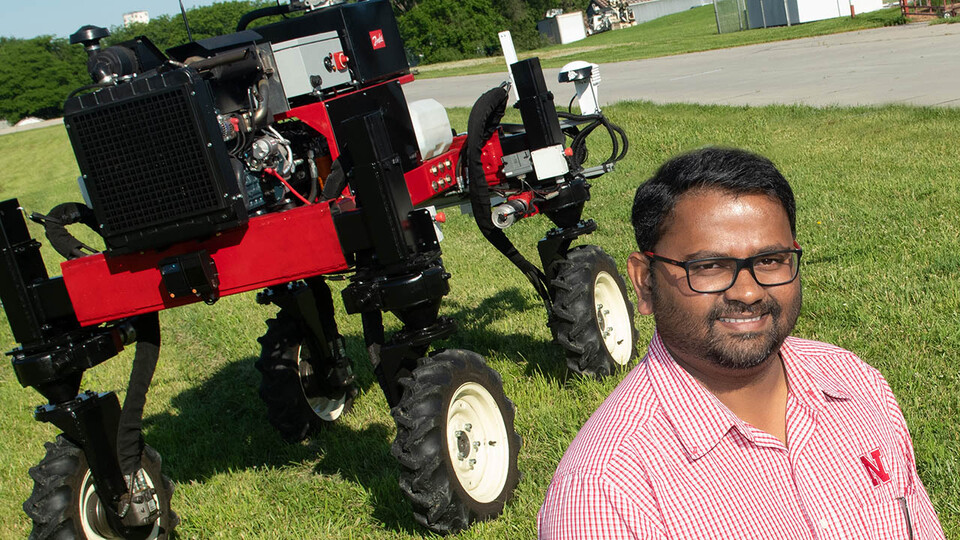Lincoln, Nebraska, USA
April 13, 2021

Santosh Pitla, associate professor of biological systems engineering at Nebraska, and his team are working on a new approach for refilling Unmanned Ground Vehicle seed tanks using aerial robots. - Greg Nathan | University Communication
Santosh Pitla, associate professor of biological systems engineering at the University of Nebraska–Lincoln, can picture a future in which swarms of small autonomous robots roll through a corn or soybean field planting seeds or applying fertilizers. These highly sensitive robots could detect conditions — soil makeup and moisture, for example — across a given field and apply varying amounts of inputs across the field, tailored to the conditions.
A new $452,783 grant from the U.S. Department of Agriculture’s National Institute of Food and Agriculture will fund research that could bring these robots a step closer to reality.
Pitla has been working to advance these robots, known as Unmanned Ground Vehicles, or UGVs, since he joined the Husker faculty in 2014. One challenge he has encountered in his research is how to refill seeds, chemicals and fertilizers automatically, without the need for the UGV to leave the field. Currently, UGVs and manned machines come to the edge of the field when their tanks are low for refilling.
Pitla and his team are working on a new approach for refilling UGV seed tanks using aerial robots known as Unmanned Aerial Vehicles. Refilling seed tanks on site, using aerial robots, has the potential to improve both the efficiency and precision of UGVs, Pitla said.
“The full potential of a multi-robot system consisting of multiple small UGVs can only be realized if a practical refilling strategy for refilling seeds and other inputs can be devised,” he said.
He and his team are working to develop a framework for this system, as well as to address knowledge gaps in how UGVs and drones can work together.
Nebraska Tractor Test Laboratory Engineer Rodney Rohrer and Husker faculty members Joe Luck and Yeyin Shi are also involved with the project. Work will start in July. Once the refueling system is developed, it will be tested at the Rogers Memorial Farm near Lincoln, which is operated by the Department of Biological Systems Engineering. The project’s funding comes specifically from USDA-NIFA’s Agriculture and Food Research Initiative, the nation’s leading competitive grants program for agricultural sciences.